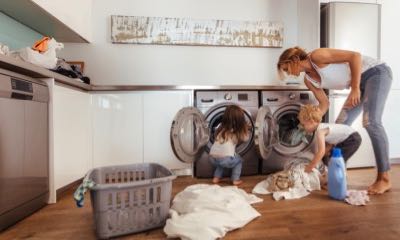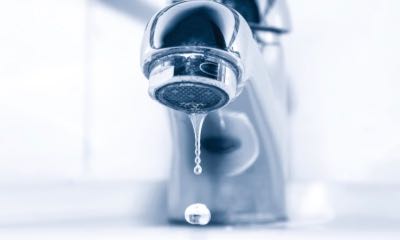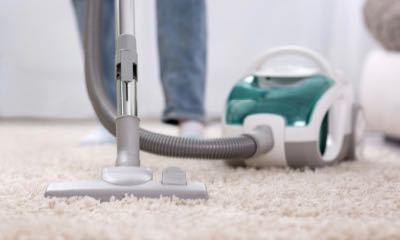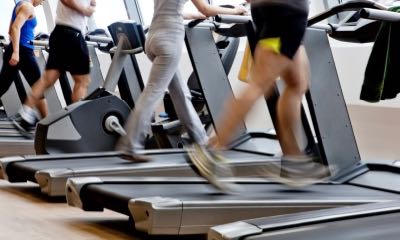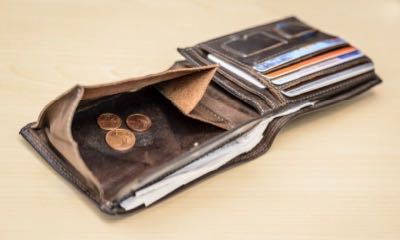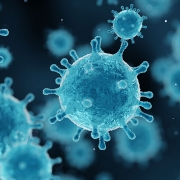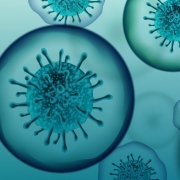7 Hidden Sources of Germs Exposed

You might not want to think about it, but we know germs are everywhere. Every place you go and everything you touch is awash with bacteria and other microbes. No nook, cranny, or surface is truly, totally clean. The good news is that most of the 60,000 types of germs you encounter every day are harmless, or even helpful, to your health. (That’s assuming you have a normal level of immunity.)
About one to two percent of germs, however, are potentially dangerous to your health. And the higher the germ density on an object, the more likely a sinister germ is living on it. One of the easiest ways to prevent contracting illnesses from these harmful germs is obvious—limit your contact.
That means cleaning your hands and your home. Of course, you do your best to keep clean areas where you know harmful germs love to camp out (e.g., toilets, communal shower floors). You also clean where microbes could do some damage by coming into contact with food (kitchen countertops or the dining room table).
But potentially harmful germs often lurk in places you might not expect. So, you probably aren’t trying to avoid or clean them. Below, you’ll find seven hidden sources of germs, and what you can do to help keep yourself healthy.
1. Laundry Machines
It’s time to air your hamper’s dirty laundry: your clothing is covered in germs. Each pair of underwear harbors 0.1 gram of fecal matter, meaning one load of laundry could have about 100 million E. coli bacteria roaming around. That might not be what you’d expect from an appliance you think is clean—because its job is to, well, clean. To combat the ick, you need to take a two-pronged approach:
- 1. Get your clothes free from as many of those E. coli germs as possible.
- 2. Keep your machine more sanitary.
To get your clothes cleaner, wash in hot water and dry them in a dryer for 45 minutes. If fabric care instructions direct against either of both of these tips, line dry in the sun. Also, don’t sort or fold clean laundry on the same table you used to sort dirty laundry without disinfecting first.
To kill bacteria in your washing machine, wash your whites first using hot water and chlorine bleach. And wash your underwear separately after you’ve completed all your other loads.
Oh, and wash your hands thoroughly after handling dirty or wet laundry.
2. Kitchen Faucet
You probably already know bathroom faucets are a hotbed for germs. That’s why many public restrooms have moved to automated models. But the kitchen faucet can host an unsavory bunch of bacteria, like E. coli, salmonella, shigella, campylobacter, norovirus, and even hepatitis-A.
And nope, it’s not just the handles (though you should clean those regularly, too). You know the tiny metal aeration screen at the end of your faucet? Turns out it provides the perfect conditions for germ growth. If you accidentally touch the screen with dirty fingers or a contaminated piece of food, the near-constant moist conditions can let bacteria grow wild. Eventually, that builds into a biofilm that can break off into the water stream and onto whatever is below.
If biofilm chunks aren’t the secret ingredient to your favorite recipe, follow this house cleaning secret: Clean your aeration screen by removing it and soaking in a diluted bleach solution once a week. Then let the water run for a few minutes after placing it back onto your faucet.
3. Car Dashboard
It makes sense that something with so many touch points (steering wheel, audio knobs, thermostat controllers, vents, etc.) would be on the receiving end of all the germs you and your passengers have on your hands.
But what can make this area extra gross might surprise you—mold.
It turns out the air sucked through the ventilation system can aerate mold and bacteria out on passengers or onto the dashboard itself. Since the dashboard is usually warm from the engine and sunlight, it’s a welcoming host for mold and bacteria.
Your best bet is to wipe down your entire dashboard, including the vent slats, with disinfecting wipes at least once a week. If you’re prone to allergies or asthma, you may want to clean your dash more often to keep the mold at bay.
4. Mobile Phone
This one might be a little less shocking, considering you may have heard for years that your mobile phone can harbor more bacteria than an average toilet.
That’s because it combines the two most likely sources of human germs—your mouth and your hands—into one area. Add that to the fact that most people plop down their phones without a lot of thought to what germs could reside on the surface. Also, many phone cases have grooves and crevices that are perfect hiding places for germs. It’s no wonder your favorite devices are such filthy cesspools.
But what may be surprising: how often experts now say you should clean your handheld devices. If you’re careful about handwashing and watching where you place your phone, you can probably get away with disinfecting your mobile phone a few times a week. (Use wipes approved for use on electronics.) If you’re less discriminating, give your device a daily wipe down to avoid serious bacteria, like staph and salmonella.
This advice is especially true if you’re using your phone (or tablet) in the kitchen to look up and follow recipes. In this case, wipe down the screen every time you wash your hands while making the meal. Sound too laborious? Use a cookbook, print out the recipe, or use a smart speaker to read the recipe aloud to you as you cook.
5. Vacuum Cleaner
It seems like the answer to a bad riddle: what makes things dirtier as it cleans? Vacuum cleaners.
They do a bang-up job of sucking up visibly grimy things like dust, hair, and food particles. But that can create a whirlwind of bacteria growth in the bag that can end up coming out the bottom. And the brushes (both the main brushes or rollers and the hose attachment brush) often contain E. coli and mold that you’re inadvertently spreading from rooms like the bathroom and kitchen to your living room and bedrooms.
The best ways to clean your cleaner? Opt for a bagless vacuum, as bags tend to promote more bacteria growth. (You can also purchase bags with antibacterial linings.) Open your bagless cylinder or bag compartment outside and throw the contents in the trash to avoid stirring up a cloud of bacteria. Then clean it out with a diluted bleach solution and allow to air dry after each use. Spray brushes with disinfectant after each use, too.
6. Gym Equipment
While working out regularly helps your health, the things you touch while doing so can make you sick.
A common place where germs hide is in polyester fabric, which is what most weightlifting gloves are made from. That leads to germs on every bar, plate, and free weight you use clinging to your gloves. So, be extra diligent in not touching your eyes, nose, or mouth when wearing them. Better yet, ditch the gloves to strengthen your grip and forearms.
If you’re more of a cardio person, you’re still at risk. Scary bacteria can hang out on your favorite cardio machine. To help protect yourself from possible illness:
- Put a towel down on machines with seats.
- Use hand sanitizer after using rowers, bikes, and other machines with handles.
- Be courteous by wiping machines down after you use them.
7. All the Money (Purse, Wallet, Credit Cards, Bills, and Coins)
When it comes to payments changing hands, it’s not all about the Benjamins—it’s also about all the germs.
Paper money is just plain gross. It gathers germs from everything it touches, which is a lot of hands. And the surfaces of paper currency are fibrous, so it holds onto them. Researchers have shown that money (94 percent in one study) can carry viruses, skin bacteria, E. coli, salmonella, and even resistant staph.
If you choose to use plastic, you’re not much better off. Credit cards also rack up impressive germ collections. That’s because they’re also passed hand-to-hand. And all the nooks and crannies of a credit card provide hiding places for germs.
Given what you’ve just read, it’s probably not surprising that your wallet or purse are stuffed with germs. After all, that’s where you probably keep your money. And in the case of a purse, your mobile phone, too.
What can you do? You have to pay for important things like food. So, you can’t really avoid these hidden sources of germs. But you can wipe down your credit cards with antibacterial wipes. Same with your wallet and some surfaces of your purse. It’s harder to actually wash cash.
But the best thing you can do is wash your hands after contacting these items. And avoid touching your eyes, nose, or mouth while you’re shopping or after paying for anything with cash.
Clean Up the Hidden Sources of Germs
Scared yet? You don’t need to be. Identifying these hidden sources of germs helps you know where to focus extra cleaning energy. And using the house cleaning secrets you’ve read will help lessen your exposure to potentially harmful germs.
And it’s all about exposure. Being smart about where harmful germs are lurking is a good thing. But your immune system is also there to protect you. So, a combination of good cleaning practices (including these hidden sources of germs), and immune-boosting habits can help you stay healthy.
References
“The Surprising Places You’ll Find Germs – and How to Avoid Them.” Cleveland Clinic online.
“Ten Places Where Germs Lurk.” ABC News online.
“10 Surprising Places for Germs.” EverydayHealth.com.
“10 Worst Germ Hotspots You Touch Every Day.” Prevention Magazine online.
“10 surprising places where germs lurk.” NBC News online.


